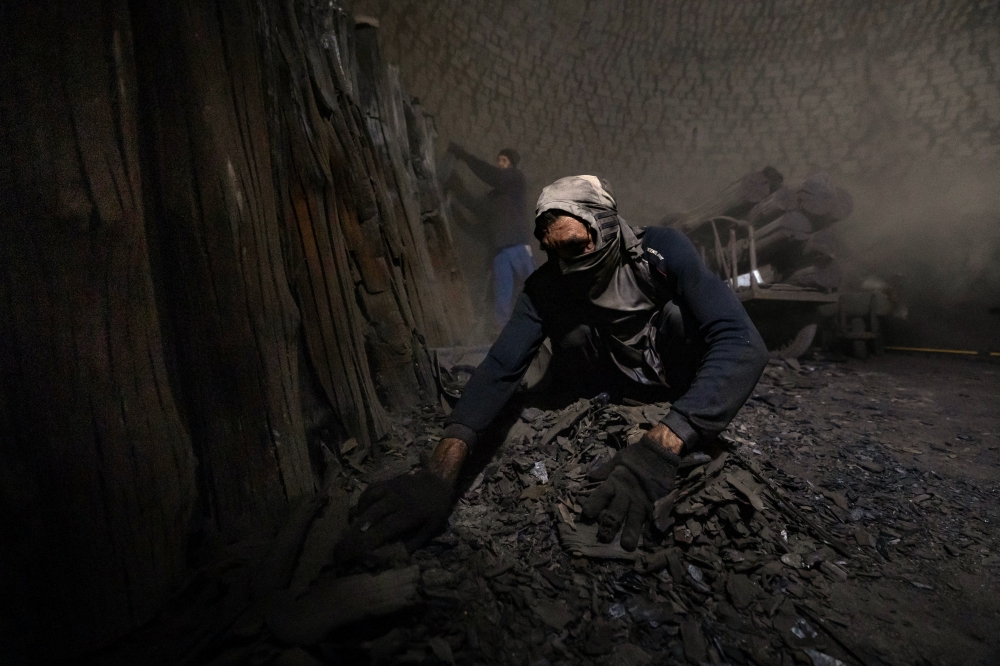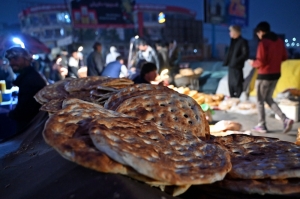- Home
- -
- News
Kuala Sepetang’s charcoal makers ignite passion to preserve a century-old legacy
- admin
- 01 Oct, 2024
TAIPING, Oct 1 — Kuala Sepetang, formerly known as Port Weld, may be familiar to those who know the history of Malaysia’s rail transportation for that was where the nation’s oldest railway station was located. For the current generation, the town, located about 16 kilometres from Taiping, Perak, is best known for its tasty mi udang or prawn noodles.
However, many may not realise that Kuala Sepetang has another ‘feather in its cap’ — it is home to the country's oldest charcoal-making industry, established as far back as 1930.
Over the years, not much has changed in the area where the charcoal factories were and still are located — at the river estuary facing the Strait of Malacca. Currently, 120 factories are operating there, most of which are family-owned and run by the third generation.
The whole area exudes a timeless, old-world charm, and is dotted with factories that look more like sheds, their weathered wooden walls blackened by the smoke billowing from the furnaces. Lying beside these structures are piles of mangrove wood from which the charcoal is sourced.

Legacy
Chuah Kee Yong, 53, owner of one of the charcoal-making enterprises called My Charcoal Factory, is a third-generation member of the family that owns the business and he told Bernama he is determined to preserve the legacy and history of Kuala Sepetang’s charcoal industry and ensure it remains part of the nation’s heritage.
Chuah, who previously held a senior position at an IT-related company, returned to his hometown 10 years ago to take over the business from his father and uncle after they expressed their desire to retire.
“I made that decision (to take over the business) because there was no one else but me to manage the factory,” he said, adding charcoal manufacturing was not unfamiliar to him as he has been helping his family in the factory since his schooldays.
Its factory price fixed at RM10 for every three kilogrammes, charcoal is not easy to produce. Besides requiring a lot of physical effort, the production process itself is dirty, dangerous and time-consuming, taking over a month to complete.

“To produce high-quality charcoal, the most important thing is the furnace or gok. This igloo-shaped structure is made from 26,000 bricks bonded with mud. We can’t use cement to construct the gok because it cracks under high temperatures of up to 250 degrees Celsius,” explained Chuah.
He added the furnace’s igloo shape is important to ensure even heat distribution, allowing the mangrove wood to be “cooked” at the right temperature.
His factory has six furnaces, each with the capacity to hold 1,500 mangrove logs.
“Imagine, each gok can process 1,500 logs weighing up to 50 metric tonnes but after the burning process is complete, the resulting charcoal weighs only about 10 metric tonnes,” he said.

Choice of wood
As for the choice of wood to make the charcoal, mangrove trees — which must be at least 30 years old — from either the bakau kurap (Rhizophora mucronata) or bakau minyak (Rhizophora apiculata) species are selected.
According to Chuah, the charcoal operators are granted permits to fell mangrove trees grown on government-owned land covering 40,000 hectares along the coast. For sustainability purposes, they are also responsible for replanting the mangroves to replace those that have been felled.
“After cutting them down, the trees are sawn into two-metre-long logs and transported by boat to the charcoal factory. The wood is then unloaded and dried under sunlight for two to three days before being transferred to the furnace.
“These logs are then stacked vertically inside the furnace. The temperature inside the furnace is raised from 85 degrees Celsius to between 220 and 250 degrees Celsius, and the heat is maintained throughout the burning process,” he said.

The high temperatures are maintained for 10 days, after which the fire openings are sealed with mud and bricks to lower the fire's intensity.
“This low fire burns continuously for another 14 days, following which all the air vents on the furnace are sealed, allowing the furnace to cool for eight days before the charcoal is formed.
“Once this process is over, I would go to the furnace to assess the condition of the wood by observing its colour and smell of the smoke produced. I would sniff the smoke coming from the air vents to determine whether the charcoal has formed properly or not,” he said, adding, “Perfectly formed charcoal does not emit smoke that smells acrid.”
He said only experience can help a person perform this task well.
“After that, we leave the charcoal to cool and then it’s ready to be marketed or used for downstream products.”
In addition to the domestic market, the charcoal produced by his factory is also exported, mainly to Singapore.

Tourist attraction
Although charcoal is mainly used as fuel, it is also an important resource for various other products such as cosmetics, cleaning agents and fertilisers.
Chuah himself has embarked on downstream activities to create an additional income stream for his company.
One of the downstream products produced at his factory is a charcoal-based item known as “black gold”, which makes for an ideal souvenir. It is called black gold due to the product’s smooth and shiny surface.
“We also make deodorising charcoal bags and charcoal-based soap, toothbrushes and anti-itch shampoo. One of our best-selling products is wood vinegar, which we produce in spray form for repelling mosquitoes or as an anti-inflammatory agent,” he said, adding the wood vinegar is sourced from the water vapour produced during the burning of mangrove wood.
“All the products we manufacture are certified by the Ministry of Health Malaysia to ensure their safety and quality,” he added.

Chuah also said Kuala Sepetang’s charcoal industry has also been attracting tourists, both local and international, who come to see the traditional charcoal-making process and enjoy the beauty of the mangrove forest.
“We provide tour guides to take them to our factory and also to take a look at the mangrove forest. I don't set a fixed fee for the tours; it's up to them how much they want to pay,” he said, adding visitors are required to book their tours in advance.
Visitors, meanwhile, are also educated on mangrove ecosystem conservation.
The 40,000-hectare mangrove forest here is not only a vital source for the charcoal industry but also plays a crucial role in maintaining the ecological balance of the mangrove marine environment, Chuah stressed.
“It also serves as a natural buffer against environmental disasters. This is why for every (mangrove tree cut) we (charcoal factory operators) are required to plant new trees, a condition that must be followed to ensure the sustainability of the mangrove forest,” he added.
When asked about the future of Kuala Sepetang’s charcoal industry, Chuah said he would continue operating his family business for as long as he can, admitting that his children have shown little interest in the field.
“This industry still has potential... but in the future, the businesses here may be taken over by outsiders as not many young people here are willing to take over the trade,” he remarked. — Bernama



